|
On my most recent visit to Spain, I rented an adorable AirBnB apartment in Madrid's "Ibiza" neighborhood right along side the beautiful Parque Retiro along the main artery of La Calle Meléndez de Pelayo. It is arguably one of the best neighborhoods in Madrid with quick access to the park, museums, and some of the top tapas bars and restaurants. Vinos de Bellota This is one of the most exciting restaurants I have visited in Spain in some time. Bellota has a great selection of wines and vermouths and successfully mixes classic Spanish cooking with some very creative options. Consider the cold starter of foie gras with a gin and tonic gelee or the traditional sliced Los Pedroches Iberian ham served over pan de cristal con tomate. A definite order is the croquetas de Doña Paula. They come three ways: stuffed with cured Manchego cheese, cured beef and mushrooms, and, perhaps, the most unusual of the three, crocodile with mandarin. The "secreto" Iberico - Photo by James Stolich The staff is incredibly friendly and very eager to explain the intricacies of each dish. It's the most fun to go with a group of two to four people and share a bunch of small plates. The huevos rotos or scrambled eggs with bellota ham and salmorejo (the classic tomato bread soup) is to die for as are the mussels stuffed with a piquillo pepper sauce and the "delicias de morcilla," a very rich, creamed Spanish blood pudding with quince sauce. Larger format dishes that I like include an excellent fillet of "secreto" Iberian ham cooked on the rare side as well as a plate of succulent pieces of merluza (hake) served with seasonal vegetables and a bunch of fried vegetable crips. The latter dish feels a bit dated in its presentation, but it sure is good! For details see: VinosdeBellota.com La Castela This is one of the more classy and typical tapas bars on calle Doctor de Castelo. It tends to be very crowded and is usually full of well-heeled (gente "pija") guests. The food is very good and seafood-centric. The chipirones encebollados (fresh grilled squid with onion confit and vegetables) are very good. They also have an excellent selection of wines by the glass. For details see restaurantelacastela.com Photo by James Stolich El Capricho Also, on Doctor de Castelo, this tapas bar is my go-to spot when I want a beer or glass of wine and nothing fancy. It's not as high-end as the other spots, but it's still very good, and it's usually not terribly crowded, and the service is friendly. For details see www.eltenedor.es/restaurante/el-capricho Photo by James Stolich Taberna Laredo This is most certainly a high-end tapas bar, and restaurant and the prices reflect it. It's a beautiful space anchored by a large and generous marble bar and is typically awash with good-looking people. Like most of the places in this neighborhood, Laredo offers a varied selection of tapas, seafood, and meat dishes. One tapa in particular that I enjoyed very much is the lomo ahumado de anguila (smoked loin of eel). It is an unusual dish to find, and it comes plated over a small mound of burrata and chopped tomato. A small and delicious tapa! For details see tabernalaredo.com Lomo ahumado de alguila - Photo by James Stolich La Monte One could call La Monte the sister restaurant to Laredo. Although they are not related, both offer similar cuisine and attract the well-heeled crowds. Their fried salmonetes (baby red mullets) are fantastic and perfect for sharing. They also have some of the best-fried boquerones (anchovies) I've had. They curiously do not have a website, but you can read a review and see location details here: https://www.tripadvisor.co.za/ShowUserReviews-g187514-d14163990-r595645252-La_Monte-Madrid.html La Raquetista Located on the calle de Doctor Castelo, this little gem of a restaurant has a very eclectic menu and excellent service. Their famous "torreznos" or fried cubes of pork belly are a great way to start, particularly if you are sharing. Be warned, though, they are rich and filling! The menu has a combination of classic Madrid dishes such as callos (tripe) a la Madrileña but with little twists. There is a dumpling of Galician spider crab as well as a Greek eggplant moussaka with lamb, dal, and yogurt. The tartare of red tuna was a spectacular dish and satisfied every craving I had for sushi-grade raw fish. It is served alongside a very spicy cream of fresh wasabi. For details please see laraquetista.com Torreznos - Photo by James Stolich Tartare de atun - Photo by James Stolich Restaurante Salino Peering down from the calle de Menorca I was drawn into the downstairs bar of Salino when I saw the display of oysters on ice. The restaurant and bar area is also very well air-conditioned, which was another huge draw during this European heat wave. The space has a clean, modern feel, and the staff is very knowledgeable about all of the dishes and is happy to explain the various preparations in detail. It turns out these are the same owners as nearby La Raquetista. They even have said restaurant's famous torreznos (fried cubes of pork belly) on the menu. Suffice it to say I had to try one of their signature "ostra bloody marys." The oysters are large and hail from Normandy, and when paired with the very simple and nicely acidic bloody mary mignonette they go down quite nicely. Ostras "bloody mary" - Photos by James Stolich One night they had a very interesting tapa called Gallinejas de taco. These are the milk-filled intestines of a baby lamb. In Rome the Italians prepare a pasta with these. Here they are fried and placed in a corn masa taco with avocado & mango salsa, and lime. Very tasty and creative! In Spain these intestines also carry a molleja or sweet bread called a “botón”! Gallinejas de taco - Photo by James Stolich Other favorites include their croqueta de centollo (crab croquette), and I love the fact you can order just one. On this particular day, they offered a special solomillo de ternera al "Doubanjiang." This translates to veal sirloin in Doubjiang, a spicy, salty paste made from fermented broad beans, soybeans, salt, rice, and various spices. I really wanted something not traditional Spanish, and this fit the bill and delivered some seriously spicy kick alongside beautiful, shaved seasonal asparagus and snap peas. They also have a variety of classic Spanish rice dishes such as conejo del monte (mountain rabbit) served with braised artichokes and wild mushrooms. For details see www.salino.es Restaurante Triana Located on Calle de Narváez between Menorca and Doctor Castelo restaurant Triana is a little oasis on this busy thoroughfare. Specializing in the cuisine of Andalucia one will find many classic fried dishes such as boquerones fritos (fried anchovies) tortillitas de camarón (fried egg discs of baby shrimp) and frittura andaluza (fried squid, anchovy, shrimp, baby shark, eggplant and pijotas – a medium white fish from the merluza or hake family). All of the food is excellently prepared and delicious. Triana also offers a good selection of Andalusian wines that are not often easy to find in Madrid. For details see trianarestaurante.es Boquerones fritos - Photo by James Stolich Ensalada rusa de marisco con pipas del mar - Photo by James Stolich La Catapa It's a tough call, but I would say that La Catapa is overall the best restaurant and tapas bar in the barrio de Ibiza. It's a beautiful space and is always bustling with activity and well-dressed patrons dining on beautiful plates of food. While it is almost always packed and may seem daunting to find a table or a bar seat, the staff are incredibly effective at finding temporary spots for guests to perch and have a glass of wine until something opens up. James Goldman trying percebes for the first time - Photo by James Stolich. The menu is classic Madrid tapas and very seafood-centric with an emphasis on high-quality ingredient sourcing and elegant plating of food. Everything is well prepared from the monkfish foie de rape in brine, cuttlefish in their ink, and oxtail stewed in red wine. I introduced my friend and dining companion James Goldman to percebes (the famed Galician gooseneck barnacles), and they were splendid. For details see https://www.facebook.com/Taberna-La-Catapa-179368415443021/ Restaurante Ogrelo I discovered this restaurant by walking by one evening and was stunned by the amazing tanks and tables of fresh Galician seafood, both alive and on ice. It was a veritable bounty of all the seafood delicacies from the costa Gallega. The restaurant is so named for the famous grelos or rapini (broccoli rabe) that are so popular in the north of Spain. This exquisite and established restaurant is on par with La Catapa in terms of quality of service and food. What makes this place unique, of course, is the emphasis on seafood from Galicia. On one night, I sat at the very spacious bar that looks onto the large tanks of water holding very lively—and often feisty—Galician centollas (crabs) and langostas (lobsters). I started with a beautiful ostra Gallega, pristine, and tasting like the sea with just the right amount of brine. Next, I ordered a Changurrito de centollo. This translates to the "guts of a Galician spider crab served inside a tiny sea urchin shell." Not only is it beautiful, but it was very rich and over-the-top pure deliciousness. Changurrito de centollo - Photo by James Stolich Ogrelo has tanks of various live sea creatures. If available, consider ordering a whole, live centolla Gallega, one of the regions most highly prizes delicacies. Other excellent dishes include zamburiñas a la plancha (live scallops in their shells), empanada de vieras (house-made empanada with scallops), chipirones de potera (wild squid) and the entrecott plancha (Galician beef cooked on the plancha). They also have one of the best ensaladillas rusas (Russian salads) I have ever tasted. For details see restauranteogrelo.com Retrieving live Galician sea creatures - Photo by James Stolich La Tasquería de Javi Estévez This gem of a restaurant from the very talented young chef, Javi Estévez, is a unique find for gastronomes combing Madrid for new ideas and concepts. Spain has always had the tradition of utilizing the offal or off-cut parts of the animal, and chef Javi has done so in a fun and creative manner, with playful dishes that are also elegantly presented. Go with one or two others if you can as these dishes are better shared. A not to miss specialty is the whole baby fried pig's head. Pair this with a refreshing salad of sliced lengua (tongue) and bogavante (lobster). Beef cheek tacos and red prawn - Photo by James Stolich Manitas (pig’s feet), fried artichokes, langoustine - Photos by James Stolich Other noteworthy plates include the lamb sweetbreads (shrimp and garlic over focaccia), manitas (pig's feet, fried artichokes, langoustine), and the beef cheek tacos and red prawn. The cool part is you season the taco with all the juices of the prawn head! The restaurant has an excellent selection of Spanish Sherries that go very well with all the rich offal and gelatinous sauces. For details see latasqueria.com Rafa This is one of the older restaurants in the neighborhood. Brothers Rafael y Rodrigo Andrés founded it in 1958 during the Franquista years when General Franco ruled Spain. The restaurant has always specialized in seafood with an emphasis on the south and Andalucia. Sons Rafael and Miguel Ángel carry on their family legacy and have maintained the formal tradition of dining at Rafa. It truly feels like going back in time. However, there is also a lively bar at the front of the restaurant where one can have a more casual experience and order a plate of Iberian jamon or a racion of the often talked-about Russian salad (ensaladilla rusa). This writer found the aforementioned dish to be too heavy on the mayonnaise. Restaurante Ogrelo, in my opinion, has a much better rendition of this classic. For an old school and traditional Andalusian culinary experience, Rafa fits the bill. For details see www.restauranterafa.es/en/ The author sampling Joselito jamon at Rafa - Photo by Ricardo Rodriguez Arribas Charnela Although not situated in the neighborhood of Ibiza, I wanted to highlight this fabulous new eatery on the very popular Calle Ponzano (a quick cab ride or enjoyable walk from Ibiza). Opened in 2018 by a young couple Alejandro Yravedo and Victoria Mántaras, this charming and intimate restaurant and bar celebrates all things mejillones (mussels). From the playful take on the traditional gilda, the "gildon" features none other than a mejillon along with the olive and pepper in place of an anchovy. The "mejillon tigre" also makes for a great 2-bite snack and is essentially a croqueta with a cooked mussel inside the shell. Mejillon tigre at Charnela - Photo by James Stolich The staff is very inviting, and the owners are typically there most of the time, interacting with guests and making everyone feel welcome. What is most interesting about the menu is there are a total of 9 cazuelas de mejillones (steamed mussels) offered! Some are very classic such as the Mediterranean with tomatoes and herbs while others like the Charnela feature cream, curry, onion, and their special toque or twist. I really enjoyed the mejillones exóticos with coconut milk, ginger, kefir lime leaves, and green curry. The mussels are specifically sourced from Galicia, which in my opinion are the best quality in the world. For details see charnelamadrid.com Cazuela de mejillones, el gildon! - Photos by James Stolich La Madridaje I stumbled across this cute little wine bar one evening and was drawn inside by the warm light and intimate feel. The staff is incredibly friendly and has an interesting selection of wines by the glass and a tiny kitchen offering small, complimentary tapas. Each time you order a drink someone will present you with a piece of slate with the tapas selection offered. Typical tapas might include a single sardine a la plancha, a piece of grilled “secreto” Iberico, a croqueta de pollo, etc. There is also a menu available of slightly more substantial dishes. The tapas at Madridaje - Photos by James Stolich This is a true neighborhood hangout spot, maybe somewhere you might pop in before dinner or after for some wine and good company. For details see www.facebook.com/MadridajeRetiro/ Ricardo, manager of Vinos de Bellota, at Madridaje on his night off - Photo by James Stolich
0 Comments
After nearly 20 years of running Quince restaurant and rustic little sister Cotogna in Jackson Square, owners Michael and Lindsay Tusk—along with managing partner Matt Cirne—have opened Verjus, a European wine bar and casual restaurant serving up delectable bites in an iconic space directly across from the Transamerica Pyramid. Those who have resided in San Francisco long enough will remember this was the building that housed the restaurant Elisabeth Daniel from owner’s Elisabeth Ramsey and Daniel Patterson in the early 2000s. It has been many different incarnations over the years, and the Tusks have taken great care to preserve the historic space, which was built during the height of the Gold Rush in the 1850s. Known as the Eclipse Champagne Building, the venue was supposedly operated as a brothel and gambling den. Photo by Postcard PR Mrs. Tusk directed the design along with Jensen Architects to blend a mix of antique, vintage pieces with contemporary elements such as tables and chairs from French furniture designer Pierre Chapo. The dining room features a dramatic red-lacquered ceiling and floor tiling from Spain. The restaurant also operates as a retail shop, selling wines by the bottle and an array of tinned products such as imported sardines and anchovies. An apothecary cabinet sourced from Parma in the late 1800s contains an eclectic mix of culinary antiques for sale that the Tusks have collected on their many travels across Europe. Photo by Postcard PR Verjus is a no reservations restaurant. Guests find a place to sit—bar, table or chef’s counter—and either order from the bar or from a server who may or may not come by your table. This can create a bit of confusion for guests as it’s unclear how best to place your order after you are seated. On a more recent visit the service issues had been addressed after the staff received feedback from guests. Servers now do come around and take orders and check on diners. I also noticed that the chef's counter was eliminated which is a good thing as it was a bit of an awkward place to sit so close to the food prep and plate ware. The food itself is eclectic and fun and strongly influenced by regional French, Spanish and Italian cooking. Chef de cuisine David Meyer and executive chef Michael Tusk have created a small menu that changes often. There is a rotating pate en croute (pate with pastry) as well as other classic French dishes such as veal sausage, duck confit, escargot, and pot a feu to name a few. The ham croquettes I ordered were perfectly cooked and very strong in flavor, appropriate as a small dish to accompany a glass of natural wine. A larger format dish of steak frittes was prepared with the flat iron cut and was perfect in every way with juicy, flavorful beef and paired with hot, salty fries. Photos by Postcard PR On another visit I had a beautiful plate of Spanish anchovies straight out of the tin and plated over two sauces: a parsley olive oil and a red pepper puree. These are such simple pleasures! A dish of local, baby artichokes served chilled with olive oil, herbs and grated Parmigiano Reggiano was also pure joy. Moreover, it was served on a beautiful Richard Genori plate, hearkening back to the early days of Quince when Chef Tusk went on a buying and collection spree of the famous Italian plate ware company. Photo by James Stolich My biggest takeaway about Verjus is that it’s a fun place to spend time. You can create the experience you are looking for, whether it’s a glass of wine and a few light tapas to a complete dining experience. And the menu changes often enough to entice one to come back again. For hours of operation and other details please see verjuscave.com. Photo by James Stolich
TO-GO WINDOW Starting in June 2019 Verjus will offer a to-go window on Hotaling Place, open for weekday lunch with a rotating sandwich selection and soft drinks. Marugame Udon is a giant in Japan and across Asia. With nearly 1,000 locations they are the juggernaut of udon. San Francisco is their second location within the mainland United States. When one thinks about a chain of restaurants this size it's natural to assume that quality may not be up to high standards. However, after learning about how they make their own noodles daily, on-site at each of their locations, using a special machine from Japan, this writer was intrigued. Photo credit: Rick Camargo I arrived at 3251 20th Avenue at Stonestown Galleria for the grand opening ceremony. To my surprise I saw a crowd of at least 200-300 people waiting outside in the rain! Yes, Marugame Udon has a global following. I quickly entered via the red carpet and was greeted by the lovely people at Spritz Marketing who are handling all of the PR. The guest list was impressive and included the executive management team of Marugame as well as the SF Japanese Consulate General and even a buddhist priest who would soon bless the new space. Photo credit: Rick Camargo Marugame Udon specializes in Sanuki udon noodles, featuring a square shape and flat edges. The concept is fast casual but with high quality ingredients. When a guest enters the restaurant every one in the kitchen shouts out the traditional Japanese greeting "Irasshaimase!". All of the staff are incredibly friendly and quick to explain the different udon bowls available, 10 in total. I opted for the the spicy chicken udon with walnuts. Once you place your order the bowl is assembled very quickly and handed to you. As you move down the line you have a number of tempura options available such as fried shrimp, squid, vegetables, etc. The whole process happens very quickly and with machine-like precision. The restaurant is so popular that on subsequent visits there was a line outside (it tends to move quickly), meaning the restaurant is running at maximum velocity most of the time it is open! Photo credit: James Stolich The broth--also made daily in-house--for my udon was very flavorful if a tad salty. The udon itself was marvelous in its texture and al-dente chew. Everything tasted very fresh. The tempura was hot and had a very nice, light batter. For the amount of production involved I was very impressed with the end product. Some of the bowls failed to convince me like the curry udon which I found to be too thick and syrupy for my tastes. However, both the Nikutama and the Kama-Age udons were excellent and very comforting companions on a grim, rainy day. I plan to return soon and try the egg drop chicken udon which looks fantastic! Spicy chicken udon. Photo credit: James Stolich There is still no wine or liquor license--I was really craving a cold sake with my udon--but hopefully this will be resolved in the near future. Due to the fast casual concept the space does feel a bit like a high-end cafeteria but the staff are so friendly that overall it's just a fun place to go, particularly for lunch. Marugame Udon is open daily from 11am until close. For details visit their website. Me, excited to try my udon bowl. Photo credit: Liam Mayclem
Galicia—Spain’s northwestern region—culminates in a town on the far north coast known as “A Coruña” in the Galician dialect. It is not far from the municipality known as “Finisterre,” so named, as it was believed that this is where the Earth ended. Galicia is a land full of mystique, forests and trees, vast beaches and one of the longest coastlines on the Iberian Peninsula. It is best known for its “materia prima” cooked in a simple way with little manipulation. Its seafood and shellfish are legendary as is its aged beef. Galicia is a bit disconnected from the rest of Spain, as it requires a 7-hour drive by car—from Madrid—and it tends to rain year round. It is a magical place that can only be appreciated by visiting its pristine lands. And of course it is well known for its historic “Camino de Santiago.” A beach in central La Coruña - Photo by James Stolich This brings us to a very unique restaurant called Alborada, located in the vibrant and very dense city of La Coruña. Head chef Iván Domínguez, a native of Galicia has crafted a relaxed and yet sophisticated dining experience that brings to light all of the elements he considers fundamental to the “Cocina Gallega.” Domínguez does not mess around. He spent many years in the Spanish armada and understands the discipline of running a fine-dining restaurant. “No soy un soñador, soy un trabajador.” I am not a dreamer, rather a worker. “Mi equipo tiene que entender que una receta tiene un alma.” My team needs to understand that each recipe has a soul. Restaurante Alborada is located at Paseo Marítimo Alcalde Francisco Vázquez, 25, just past the Torre de Hercules, facing the sea. Guests enter the restaurant through two large glass doors that lead to a contemporary dining room with clean lines, white table clothes, a glass wall showcasing the impressive kitchen. The ambience is relaxed and the service is impeccable and yet down to earth. We elected for the “Espíritu de Galicia” menu and were treated to a series of dishes that delighted us in their simplicity and creativity and yet never overwhelmed or exhausted our palates. Cured caballa (mackerel) over patata Coristanco - Photo by James Stolich Buñuelo de calamar en su tinto (a fritter of calamari in its own ink) - Photo by James Stolich It is always welcome to start a meal with a bit of broth or soup like the rich consommé of Celtic chicken that arrived at our table. What followed was a series of thoughtful and intriguing dishes that left us extremely happy. Highlights include the cured caballa (mackerel) over patata Coristanco, presented like sushi and accompanied by queso San Simón de Costa with quicos and toasted corn, as well as a buñuelo de calamar en su tinto (a fritter of calamari in its own ink). A bit later came the “bread” course. Pan is of course of utmost importance in Spain—particularly in Galicia—and so we sampled various local breads along with butter from Jersey cows “Airas Moniz” with Kombu seaweed. The bread course at Alborada - Photo by James Stolich While I will not delve into every course the vegetable croquetas with salsa verde, topped with a piece of cooked merluza (hake) were remarkable. Next up was a Cigala (scampi) roasted and accompanied by seaweed and tomato water. The lombarda (cabbage) dish with erizo (sea urchin) was good but I found the vegetables to be a bit heavy. I would have preferred something lighter to accompany the very pristine urchin. The penca (almost like an enchildada or empanada) de acelga (Swiss chard) rellena con caldo de sus hojas y minchas was light and enjoyable in every way. Vegetable croqueta with merluza (hake) - Photo by James Stolich Fabas (beans) de Lourenza and setas (mushrooms) with an emulsión of clams from la ria de Arousa. Photo by James Stolich My favorite dish, perhaps—well almost—was the fabas (beans) de Lourenza and setas (mushrooms) with an emulsión of clams from la ria de Arousa. It was just exceptional. The texture and everything were perfect about this dish, including the plate upon which it was served. I didn’t take a photo of the whole fish but the cabracho or bispo (scorpion fish) cooked with a sauce of clementines was unbelievable. I literally could not stop eating it. The last savory course was liebre (we would call this wild hare) and was deceptive at first. What I discovered was succulent stew meat with a crispy exterior accompanied by milhojas (puff pastry) filled with the kidney, liver and heart. It was an exquisite dish and surprising to have as our final savory course that in many places might have been a giant hunk of beef. Cabracho or bispo (scorpion fish) cooked with a sauce of clementines - Photo by James Stolich Liebre or wild hare with a puff pastry of all the organ meats - Photo by James Stolich We wrapped up the meal with a queso “del país,” a young Galician cheese aged 30 days that had a pleasant, sour quality to it. Then came a postre of apple and granita with a bit of mint (my memory is fading) that was incredibly light and refreshing. The second dessert of castaña, calabaza, zanahoria and helado de cantarelas was stunning. The flavors were delicate and well balanced by the chestnuts, pumpkin, carrots and yes believe it or not ice cream made with chanterelle mushrooms! Postre of castaña, calabaza, zanahoria and helado de cantarelas - Photo by James Stolich
The service and staff at Alborada could not have been more accommodating. It was a special treat to sample Chef Iván’s take on the cuisine of Galicia and to also dine in such a relaxed and refined environment. There is no doubt that Alborada will continue to draw in adventurous and curious diners from around the world. Alborada is open daily for lunch and dinner. http://restaurantesalborada.com/ The other day I made this kind of mint/basil sauce to go with my rack of lamb dish I was serving for a dinner party. The sauce has garlic and anchovies as well, giving it lots of that umami flavor. I thought it would work really well in a pasta dish. To keep things interesting I add Spanish olives stuffed with anchovies and then finish the dish with lots of Parmigiano Reggiano and aggressive amounts of hot chili flakes. Ingredients (serves 6-8 as a first course): -leaves from 1 large bunch of basil -leaves from 1 large bunch of mint -1 whole garlic clove, peeled -10-12 anchovy fillets, chopped (do not rinse or wash) -Extra virgin olive oil -Juice of one lemon -1 can of Spanish olives stuffed with anchovies -1 pound best quality dry spaghetti -Parmigiano Reggiano for grating -Chili flakes In a blender or food processor combine the basil, mint, anchovies and garlic. Add about 1 cup of oil and blend, drizzling in more oil until you have an emulsification. Add the lemon juice. Taste and adjust seasoning as needed. Given that we did not rinse or soak the anchovy fillets it is probably not necessary to add any additional salt. If you are using fresh anchovies or fillets soaked in vinegar then you may need to add a bit of salt to taste. Pour the pesto into a container and chill in refrigerator until ready to use. To make the dish put a large pot of salted water on the stove and bring to a boil. Drop your pasta and cook according to the package instructions, removing the pasta about 1 minute before it's perfectly al dente. While the pasta is cooking pour the pesto and Spanish olives into a large sauté pan and heat very gently (do not boil). Add a generous amount of chili flakes and stir through.mWhen the pasta is ready use tongs to transfer to the pan and toss for 30 seconds over medium-low heat. If the sauce looks a bit tight or dry add a little pasta cooking water.
Place the pasta onto plates and serve each dish with liberal amounts of grated Parmigiano Reggiano and extra chili flakes as desired. As many of you know, chefs Nick Balla and Cortney Burns began their pilgrimage of bringing authentic Hungarian cuisine to SF diners at Bar Tartine nearly five and a half years ago. Over the years they evolved their cuisine and experimented endlessly and even published a cookbook. More recently they ventured off into new territory with Japanese-influenced Motze. They have now decided to go back to making what they call “Central-European peasant food made with noble ingredients” at their new concept Duna, Hungarian for the Danube river. This writer couldn’t be happier as I have so many fond memories of the early days of exploring Hungarian dishes at Tartine. Favorites that come to mind are numerous and include the Hungarian “langos” potato-wheat fried bread (seasoned with onions and garlic and a generous amount of sour cream), the succulent tripe braised in beef stock and orange juice and finished on the grill, the chilled kohlrabi soup (baby turnip, sour cream, radish) and the goat meatballs (red tipped spinach, chili, garlic). Assorted dishes at the new Duna - Photo courtesy of Postcard Communications Although some of these dishes may make their way onto Duna's new menu, it will probably be in a different form or evolved preparation. For example, the restaurant's dips—such as the Liptauer paprika cheese and the kohlrabi tzatziki—are accompanied by a smoked potato flatbread inspired by the original langos. Another new concept is the chopped salads like the Budapest/Brooklyn (paprika salami, pepper jack, mushroom, tomato pepper vinaigrette) and the Sofia (feta, tomato, cucumber, pickled beans, marjoram vinaigrette). These salads are hearty and best eaten with a spoon! Other notable dishes include the chilled beet soup with kvass, kefir and almonds and the exquisite stuffed cabbage rolls with sausage, pork belly, mushrooms, dried apples and sour cream. The latter, while complex in ingredients, manages to be hearty, flavorful and light at the same time. It is the kind of dish that tastes even better the next day. The Sofia Salad - Photo by James Stolich It should also be noted that Duna offers an interesting selection of Hungarian wine as well as some very creative cocktails based around sake and soju (the restaurant does not have a full liquor license). Two standouts include the “High Balla” (strawberry juniper cocktail with soju) and the “Rye and Smoked Tangerine” made with sake and Sherry. For not having hard alcohol both deliver that “stiff” drink type experience while being well balanced. Chicken paprikas with spatzle - Photo courtesy of Postcard Communications
The former herbivore space at 983 Valencia Street underwent a brief and thoughtful refresh, drawing inspiration from the wild flowers and old-growth forests that line the Danube. Small pieces of art adorn the restaurant and reflect the history of Central Europe. There is even a custom art piece inside the entrance created by Ms. Burns. The restaurant and concept are evolving so expect ongoing changes and experimentation within the framework of the Hungarian cuisine that Nick and Cortney hold dear to their hearts. Duna is open Wednesday through Sunday for dinner. Lunch service is planned for later this summer. Click here to read my original interview with Nick and Bar Tartine back in October 2011 and to learn about the history and roots of Hungarian cuisine. Caviar Delivery On Wednesday, June 14th, Duna officially partnered with Caviar, the restaurant delivery service. San Franciscans across the city are now able to order spoons salads and chicken paprikas delivered to their doorstep for lunch (Wed-Sun 11:30am-2:30pm) and dinner (Wed & Thur 5:30-9pm; Fri & Sat 5:30-10pm). And with an eye towards all the surrounding offices, they also have specials for groups of eight people or more. Orders can be made here. Sunday Suppers Starting on Sunday, June 25th, Duna will introduce its weekly supper series, an ever-changing, multi-course, set menu ($58 per ticket) – everything from a taste of the Danube to a Midwest, Central Europe mash-up. As most New Yorkers know it’s next to impossible to find decent Mexican food outside of California or of course Mexico itself. And historically Mexican cuisine—at least in the States—has mostly been relegated to the ubiquitous taco and carnitas and bad Tex-Mex, or—if you come to San Francisco—you can find the holy grail of burritos. Yes, this can be delicious, but it's not regional Mexican cooking. I’m delighted to say that contemporary Mexican cuisine has started to be taken a lot more seriously across the country, particularly in major food cities like New York, Los Angeles, Chicago and San Francisco. There was a great write-up in the New York Times titled ‘Modern Mexican’ Steps into the Spotlight. The examples are numerous and include the likes of Californios and Cala in SF and one I did not know about until recently—Cosme in the Flatiron District in NYC. Stuffed avocado "vuelve a la vida" - photo by James Stolich On a recent trip to “el gran apple” I had the good fortune of connecting with my Instagram colleague—and prolific eater and critic--@elgranpete over a most enjoyable lunch at the aforementioned Cosme. Located at 35 East 21st Street, just steps from the Union Square Green Farmer’s Market, the restaurant is quintessentially modern with a very chic vibe. The industrial space is well appointed with soft pendant lighting, wooden tables and a very comfortable bar with an extensive collection of mezcal. Chef and owner Enrique Olvera (owner of the very successful Pujol in Mexico City) opened Cosme three years ago after extensive research into the city’s dining scene. He and chef de cuisine Daniela Soto-Innes offer guests a highly curated, modern take on regional Mexican cuisine, using mostly local ingredients from the Hudson Valley. Start off with the stuffed avocado and seafood "vuelve a la vida" a very unusual dish to find in the states. A perfectly ripe avocado is filled with a combination of raw striped bass, fluke, scallops, and octopus and seasoned with a sauce of ketchup, Valentina hot sauce, Serrano peppers, horseradish and cilantro. Another unusual and exceptional dish is the uni tostada with bone marrow salsa, avocado, and cucumber. The egg sope with chorizo, refried black beans, and a barely poached egg is also an excellent appetizer for sharing. The green sauce is comprised of tomatillos, white onion, garlic, scallions, cilantro, epazote and cumin and balances out the richness of the masa. Other favorites include the classic chilaquiles divorciados (shredded chicken with a red and green sauce with house made chips and a poached egg) and the duck enmoladas (mole rojo, crème fraiche). In the latter the mole is made with pasilla, tomatoes, garlic, onion, herbs, aromatic spices, nuts, prunes, raisins, chocolate and a bit of clove and cinnamon, all adding up to a very complex and rich flavor profile. Egg sope with chorizo, refried black beans, and a barely poached egg - photo by James Stolich All of the dishes are rooted in tradition and are delectable. If you are feeling adventurous—and hungry—order the enfrijolada, a lovely sopa of pureed black beans with garlic, onion, epazote, avocado leaf, and pasilla. Beneath the black beans and hidden under an "hoja santa" or holy leaf are several house made Cosme tortillas. The dish is finished off with ricotta and queso fresco. Finally, if sharing, the lamb barbacoa is an absolute must-order. Soto-Innes marinates the shoulder in a rub of guajillo adobo and slowly braises the meat until very tender and succulent. The dish is served with shishito peppers, quelites (a type of leafy Mexican green) and three unique salsas. Enfrijolada con hoja santa - photo by James Stolich For dessert, the kitchen offers a very respectable rendition of churros and Mexican hot chocolate, but the dish that speaks to the creativity and high level of Cosme is the famous cornhusk meringue with corn mouse. The husks are baked and ground up into a powder to form a meringue. A mouse made from corn kernels, sugar, salt, and cream makes up the middle of this fascinating dessert, a beautiful homage to Mexican corn and tradition. Cosme is open Monday through Friday for lunch and dinner and brunch and dinner on Saturday and Sunday. Corn husk meringue - photo by James Stolich
Note: this interview was originally published in October, 2011 by James Stolich San Francisco has always been a city recognized for its eclectic and international cuisine. Our local progressive restaurants like Commonwealth, Aziza and Michael Mina innovate by drawing on the influences of either the chef's country of origin or area with which they have a special connection or affinity. What happens when the owners of a French bistro in the Mission turn the restaurant on its head and go all out with a full Hungarian menu? Chad Robertson and Elisabeth Prueitt re-opened Bar Tartine (561 Valencia Street) earlier this year with a menu focused on dishes reflecting the Danube River region of Eastern and Central Europe. Their strategy was to hire chef Nick Balla (formerly of Nombe and O Izakaya) who is of Hungarian descent and spent 3 years living in Budapest. We caught up with Nick following his recent 3-week culinary research tour throughout Hungary: Nick Balla with co-chef Cortney Burns. Photo courtesy of Bar Tartine.
What inspired your interest in cooking? Nick: Both my parents were into cooking and I gained an appreciation early on. My dad cooked some traditional dishes and things handed down from his mother. My mom had the garden so she’d make all sorts of amazing stuff including Indian and Asian. My dad later moved back to Hungary and I went to live with him when I was 14 for two years. Then I came back to Michigan to finish high school. I really wanted to be a rock star but that didn’t work out so I started washing dishes in a couple of restaurants. When I was 19 I was the chef at this restaurant in Michigan. Later I decided to go to the CIA in New York and get my bachelors. You just returned from 3 weeks in Hungary. What sorts of new things did you discover and how might this translate to the menu at Bar Tartine? Nick: We started in Budapest and visited every farmer’s market possible. We also did some day trips to small towns like Etyek. We had an amazing meal at this family’s house. They had killed a rooster for us the day before and also had the most delicious homemade cheeses and sausages. They even have their own still and served us homemade házi pálinka (house brandy). It was just great. Then we headed down to Lake Balaton south of Budapest where we hit up the major wine producing areas of Villány and Szekszárd. Hungary has always been more of a wine country than beer drinking but during the years of socialism the wines became mass produced and less artisan. Native grapes Kékfrankos and Kadarka nearly became extinct. And now it’s coming back. There are many small producers making amazing wines and food products. We will start to see them exported over the next 20 years. We also found a lot of obscure regional dishes like halászlé, a fresh-water fish stew with paprika. This is one dish I definitely want to recreate at the restaurant and put my own stamp on. What do you like most about Hungarian/Eastern European cuisine? Nick: It has very unique flavor profile. I hate the word fusion but Hungarian cuisine marries so many different cultures and foods together. Some might want to group it in with Slavic or Germanic food but it’s really its own thing. Hungary is right in the middle of a ton of different spice routes that were occupied by the Turks. The Hungarians themselves were nomads who also explored much of China. It’s a fusion of Germanic and Slavic food with Asian influence. They love southeast Asian chilies and dumplings and embrace both subtle and loud forward flavors. And the food is not heavy. Have diners been receptive to the new menu at Bar Tartine? Nick: We are getting amazing feedback. People have been receiving it well. It’s risky taking off a burger that is popular and completely overhauling a menu with dishes people are not asking for. Overall, though, it’s been overwhelmingly positive. We’ve gained a new audience of people who appreciate it. It’s going to keep evolving. You can tell that Balla has the support of Bar Tartine’s owners to embrace Hungarian cuisine and bring its distinctive flavors to diners. The new menu at Bar Tartine is fun and refreshing with well-composed, thoughtfully prepared dishes. All of the pickled appetizers artfully served in individual glass jars are delicious. They include shredded cabbage with chili paste, King trumpet mushroom and artichoke, dill and green garlic cucumbers, pickled parsnip and radish and carrots with turmeric. I recommend ordering the sampler so that you can savor each one at the beginning and throughout the meal. The starter of eggplant with arugula, cardoon mayonnaise and lemon was very earthy and savory. The grilled tripe with fennel, cabbage and coriander had an extraordinary flavor and texture and imparted a delicious sweetness with undertones of game. According to Balla, the tripe is first simmered for 5 hours in a combination of orange juice and beef stock. Later it is fried for about 10 seconds before being finished on the grill. For tripe lovers this is a must have. Other dishes include chilled kohlrabi soup (baby turnip, sour cream, radish), goat meatballs (red tipped spinach, chili, garlic) and smoked rainbow trout salad (horseradish, sour cream, kohlrabi, crispy skin). If you are hungry or up for sharing with your dining companion indulge in some bigger plates like the Kapusnica (smoked blood sausage, pickled cabbage, cherry, chili, hen of the woods), the Gulyas (beef brisket, red wine and caraway broth, whole wheat bread, marrow) and Chicken paprikas (baby shiitake, shallot, kale). Order a side of the grated buckwheat egg dumplings (onion sauce, chervil) to accompany the succulent chicken. All of these dishes have bold, pronounced flavors due to the regional spices and preparations but at the same time never feel too heavy. Bar Tartine accepts reservations and is open Tuesday through Sunday for dinner and brunch service on Sundays from 10:30am to 2pm. Go beyond goulash and give this unique restaurant a try. One Market Restaurant has not only survived but prospered for 24 years in San Francisco. When it opened in 1993 at the end of Market St. at the Embarcadero it was certainly one of the most anticipated restaurants of the year. Opening chef Bradley Ogden was one of the first of his time to embrace the now ubiquitous "farm-to-table" movement. Since 2004 chef Mark Dommen (Fleur de Lys, Park Avenue Cafe and Lespinasse in New York City) has been diligently overseeing the open kitchen and one of the city's first "Chef's Table." After celebrating 24 years in business it's only natural that One Market should undergo a light refresh. San Francisco's Arcanum Architecture ensured all of the rooms and alcoves received a fresh coat of white paint. The bar area now has custom, sea urchin pendant lighting and the front lounge area has walnut-top tables as well as new pendant lighting. The massive windows showcasing the Bay and extensive millwork have all been preserved. Tasmanian Ocean Trout - Photo by James Stolich What impressed this writer most is after entering the restaurant and passing through the enormous and bustling dining room is the open chef's counter, one of the first to debut in SF. Nearly no one was seated there! How can this be I pondered? Surely a seat at the chef's counter is one of the most coveted in the house. Well, I have to say this is without a doubt the place you should be if it's just 2 of you. It is so much fun to watch the very seasoned cooks adeptly work the line and produce an amazing array of dishes to service the 160-seat seat main dining room as well as the private rooms. Start out with the foie gras torchon (brûléed, pink champagne geleé, rhubarb-strawberry compote) or the beet carpaccio (radishes, fresh chèvre, sherry vinaigrette). The lightly smoked Tasmanian Ocean Trout "Mi Cuit" is also a nice treat. All of the steaks are very good but go for something different and order the Rossotti Ranch veal (sweetbreads, ricotta gnocchi, sweet vermouth) or the black pepper-crusted Liberty Farms duck breast (duck leg confit, soubise, braised cabbage). One Market is open Monday through Friday for lunch and dinner and Saturday for dinner. Filet of beef with accompanients - Photo by James Stolich The open chef's counter at One Market - Photo by James Stolich
The Alembic, located in San Francisco's Upper Haight district at 1725 Haight Street, has been serving up some of the city's most sophisticated and carefully sourced cocktails for ten years. Their very tiny gastropub kitchen has also provided guests with a bevy of small, often unusual plates--think sweet breads, pickled quail eggs, duck hearts--to accompany the libations. After nearly a year in the making the restaurant has built out an expanded dining area in the former Red Vic Movie House, directly next door. Executive chef David Faro (Campton Place, Verbena, Google) joined Alembic as a sous chef in 2015 and is now offering a new and expanded menu of both small and large plates, including a 4-course chef's tasting menu for $48. Photos by Eric Wolfinger Whether you stop in for a cocktail and a small bite or a full dinner do not miss out on the jerked-spiced duck hearts with pickled pineapple and thyme salt. Not only is it unusual to find duck hearts on a menu but the flavors work so well with the cocktails, particularly the bourbon-based drinks. Once you try these you will order them every time! Another very good and small starter is the sprouted lentil croquettes with yogurt and Calabrian chili. The bone marrow will also not disappoint and--if you are looking for something heartier and stick to your ribs--the fried chicken with collards and sausage gravy will fit the bill. I love the idea of a 4-course tasting menu as the dishes are all small in size and you are able to try chef Faro's creations without being overwhelmed or overfed. The menu changes frequently but may include notable dishes such as first-of-the-season asparagus (braised pine nuts, meyer lemon, parmesan), Liberty Farms duck (black trumpet mushrooms, young broccoli, chestnuts) or sweetbreads (gochujang, turnips, charred scallions). Jerked duck hearts with pickled pineapples Chef Faro has also taken on the very ambitious endeavor of curing 8 different types of charcuterie in-house, including spicy capicola, nocciola, cotechino, smoked house sausage, mortadella, country pate and misozuke duck. Most are very good while some--like the mortadella--do not stand up to their counterparts imported from Italy. It's the sign of a young and very zealous chef taking on a lot of work! I would humbly suggest perhaps focusing on a few types of charcuterie to begin with and doing them very well. The cocktails--under the stewardship of head barman Jacob Racusin--are as great as they have ever been and are now classified into two categories: “New School” – where every drink incorporates ingredients made in-house, and “The Canon” – featuring timeless drinks that fit the season. Faro and Racusin maintain a 1,000 square foot garden at the back of the restaurant to supply ingredients for the bar and kitchen. Alembic is open seven days a week. For hours of operation and more details see www.AlembicSF.com. Sprouted lentil croquettes
|
AuthorJames is a food writer and Bay Area chef who owns and runs a private dinner party and cooking class business specializing in regional Italian and Spanish cuisine. See CookWithJames.com Archives
October 2019
Categories |


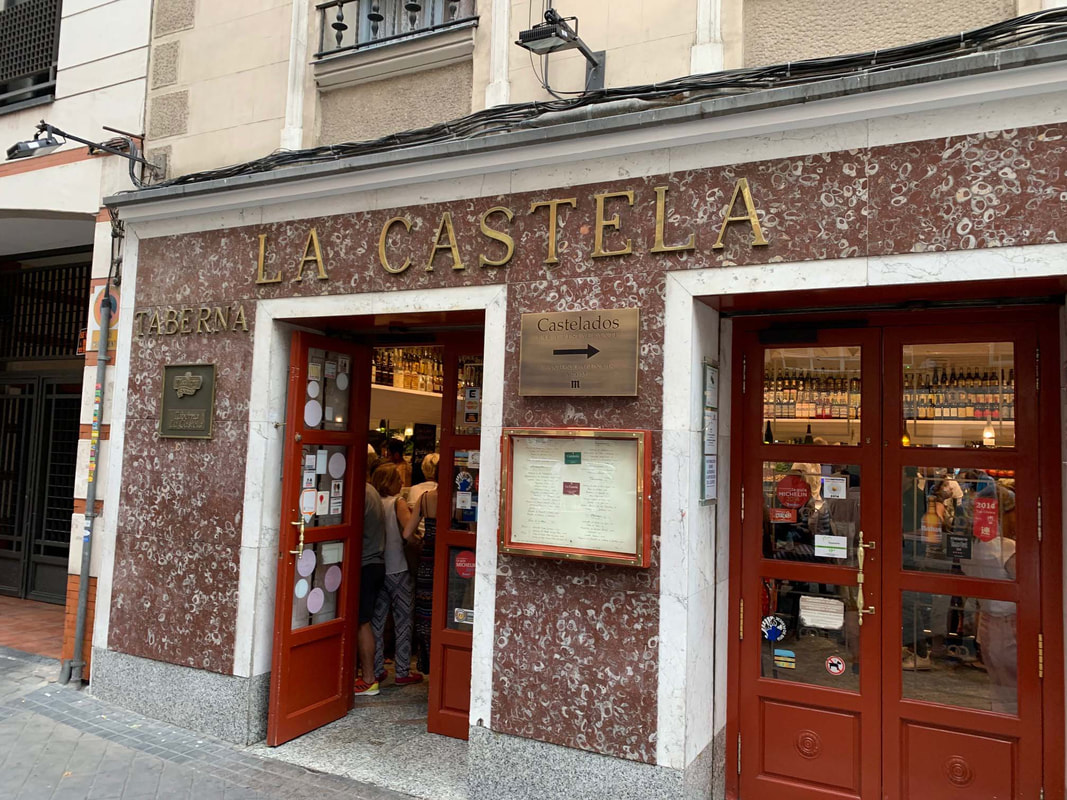












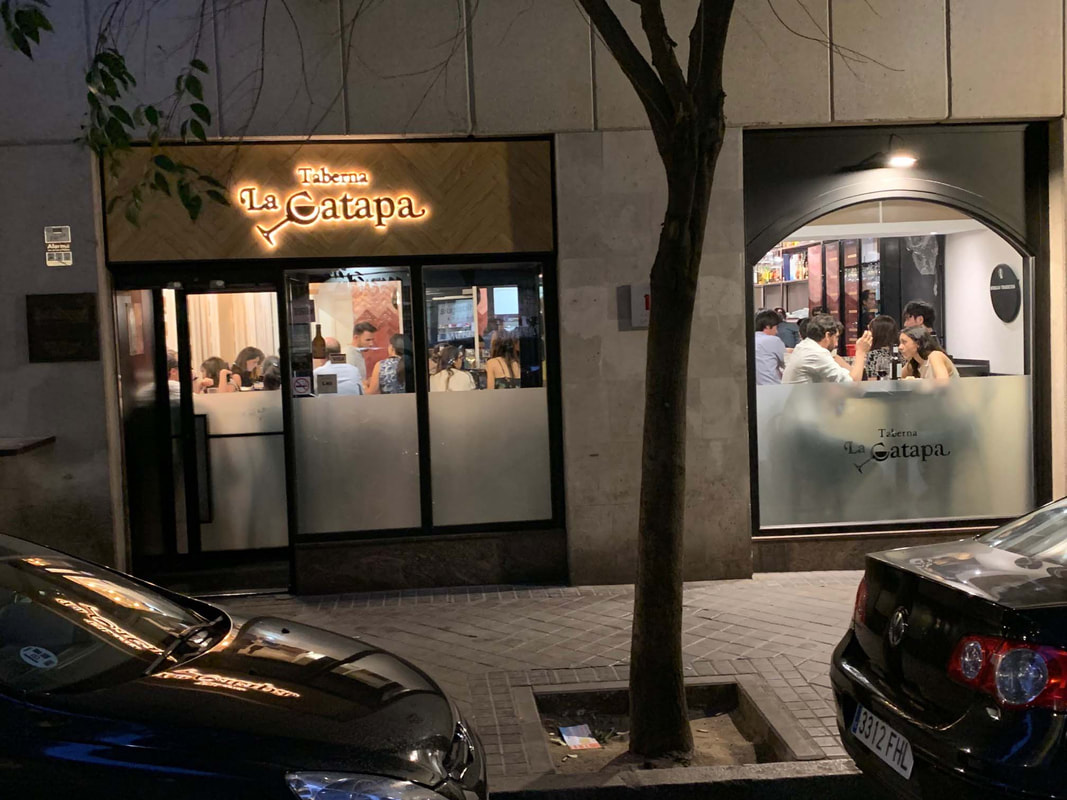








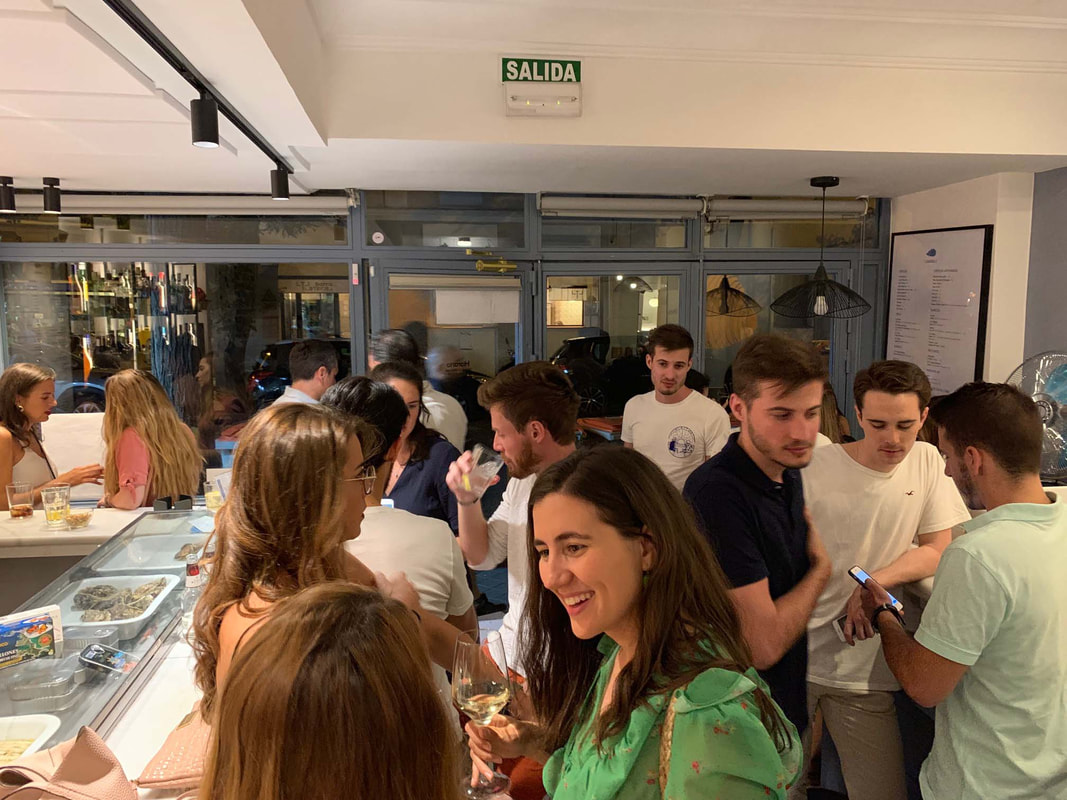




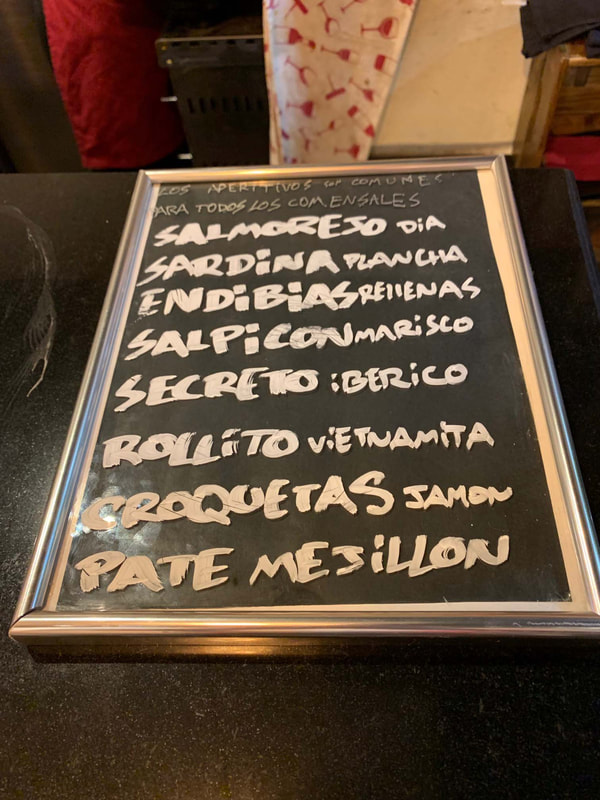






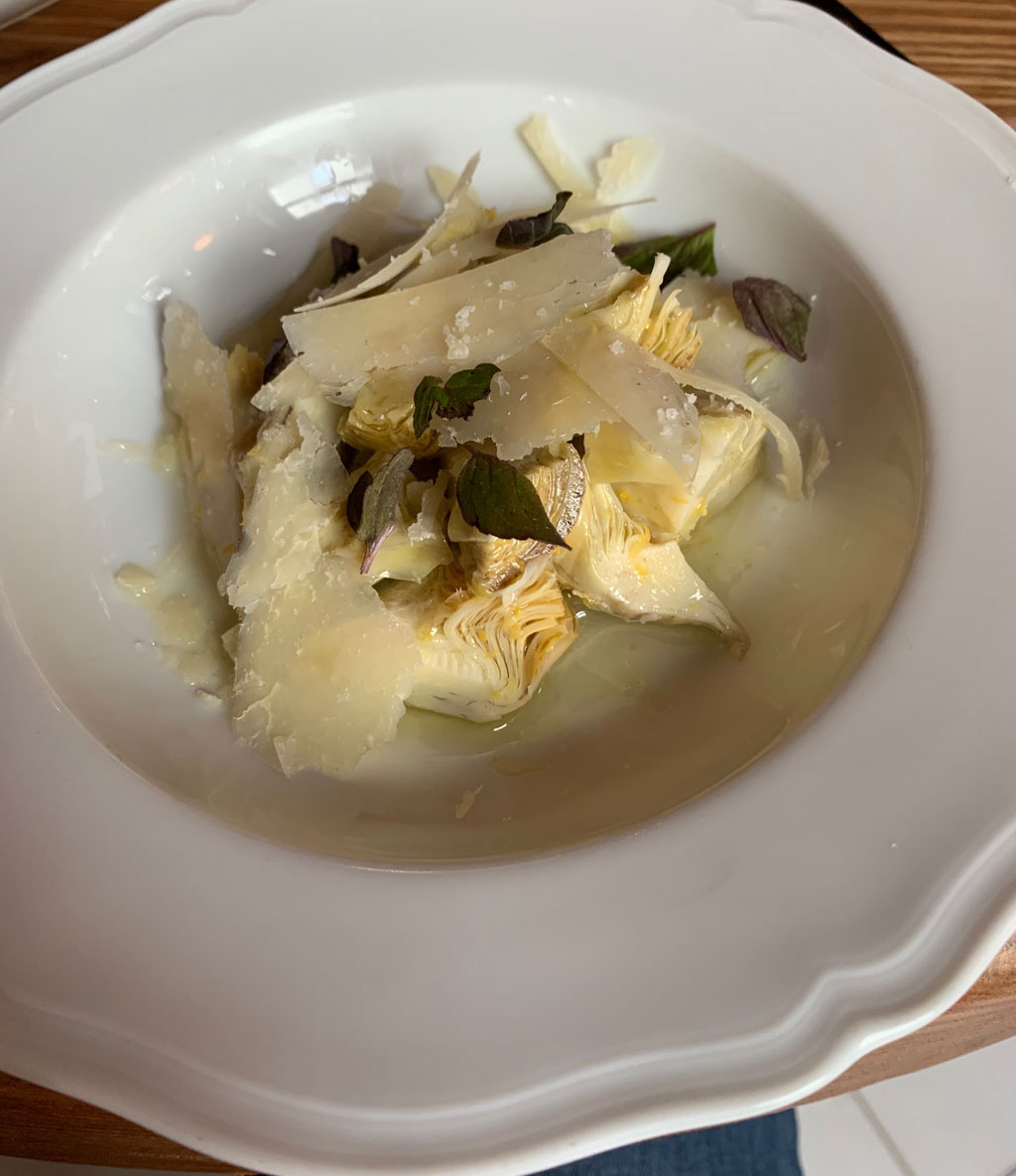




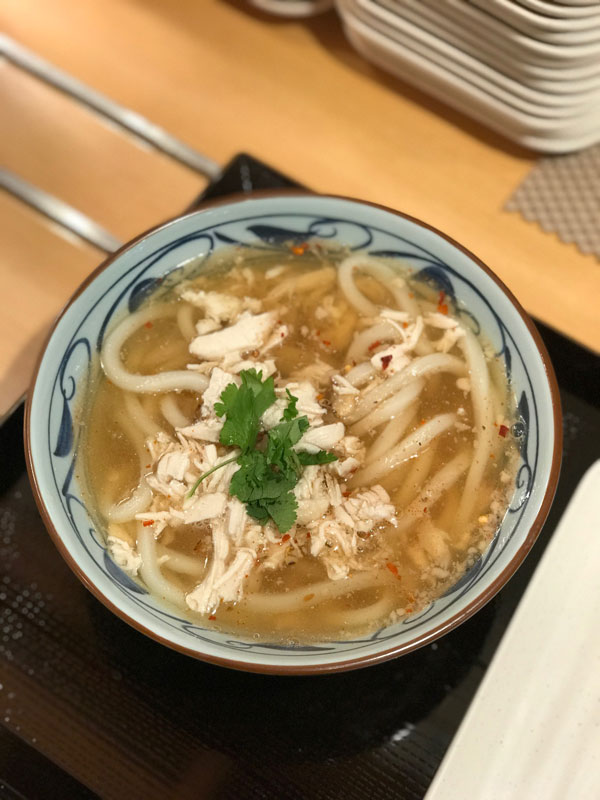






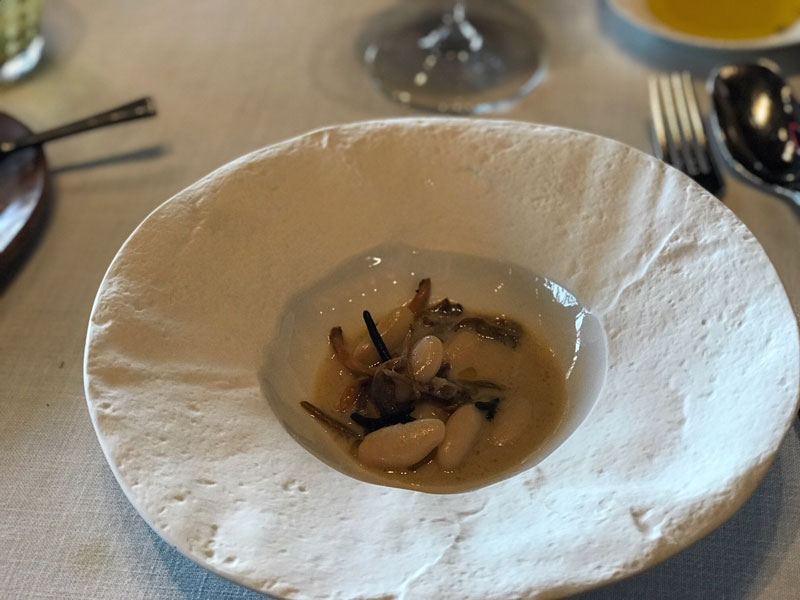








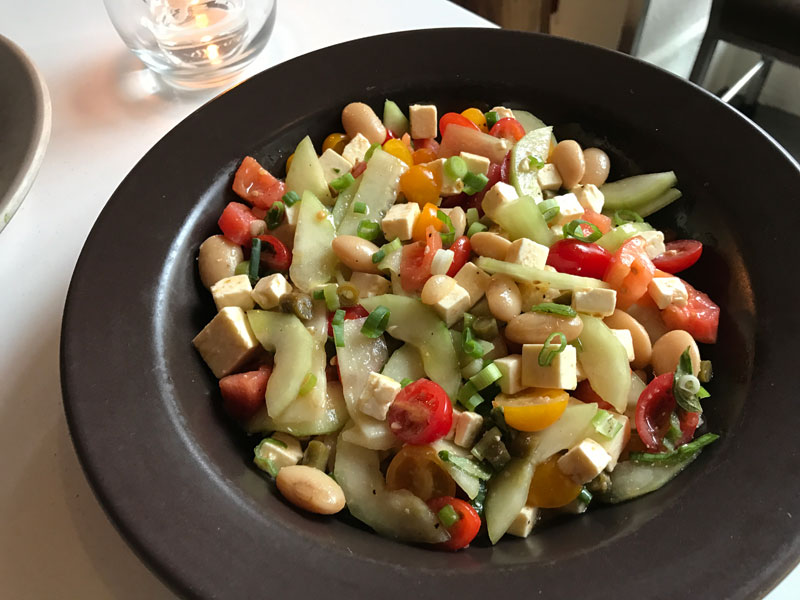










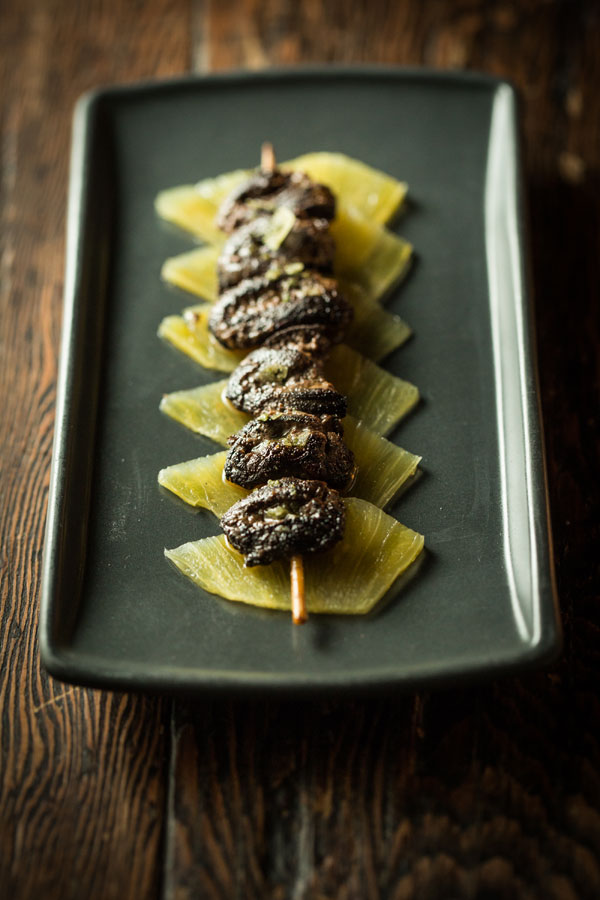

 RSS Feed
RSS Feed